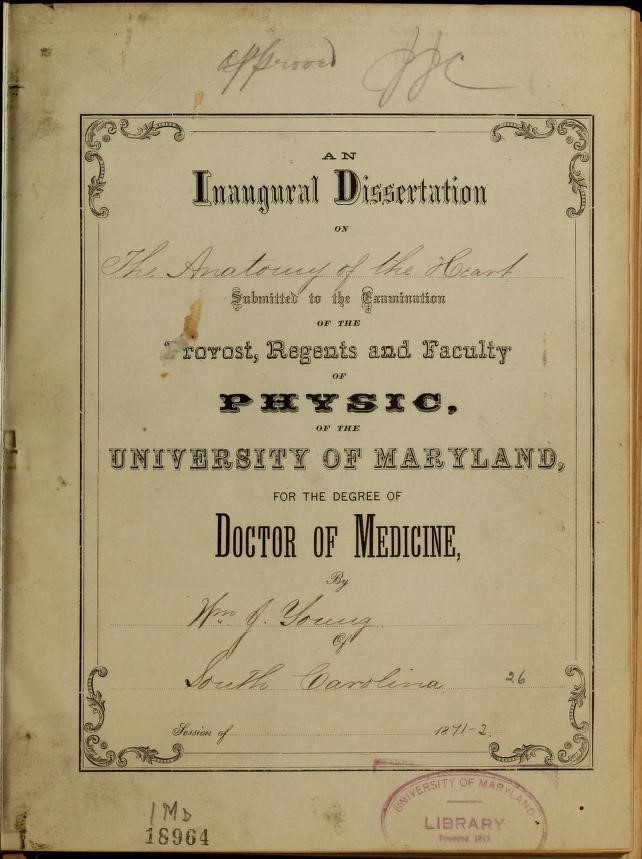
February is American Heart Month. To acknowledge this month, historical collections is highlighting unique materials on this vital organ. First up, a series of historic dissertations and theses written by graduates of the School of Medicine from 1830 to 1884 on the heart
These dissertations highlight the changing theories and teachings on diseases of the heart and its physiology. When read from oldest to newest they provide a timeline of heart research of 19th century medical education at the University of Maryland.
The earliest thesis from 1830 is philosophical, asking the question, “What is the principle of life?” Dr. Mitchell believes it to be the heart. He states, “That the heart contains this principle [life] in a greater degree than any other part it distributes its vivifying influence to the remotest parts through the medicine of circulation.” His argument is that the heart is the most important organ in all the body, ruling all other systems and organs. In 1830, a lot was unknown about the heart and circulation system, yet its importance was recognized and taught.
The later theses describe the way the blood flows through the heart and paint a picture of its anatomy. Trautman’s 1862 thesis states, “The heart can be divided into two separate organs, the right and left heart, or the heart of the respiratory; and the heart of the arterial circulation.” Indicating an early understanding of how the chambers of the heart work to control circulation throughout the body.
Interested in reading the theses? Check them out in our Digital Archive.
- John T. Mitchell, Class of 1830, An Inaugural Dissertation on the Principal of Life & Action of the Heart.
- James T. Ghiselin, Class of 1852, An Inaugural Dissertation on the Physical Examination of the Heart.
- C. Theodore Trautman, Class of 1862, An Inaugural Dissertation on the Anatomy and Physiology of the Heart.
- George Perry Jones, Class of 1865, An Inaugural Dissertation on Diseases of the Heart.
- H. H. Jones, Class of 1867, An Inaugural Dissertation on the Heart, Anatomically and Physiologically Considered.
- P. H. Reiche, Class of 1869, An Inaugural Dissertation on The Heart.
- J. F. Bowie, Class of 1871, A Dissertation on the Heart.
- William J. Young, Class of 1872, An Inaugural Dissertation on the Anatomy of the Heart.
- T. S. Kirkpatrick, Class of 1884, The Anatomy of the Heart.

